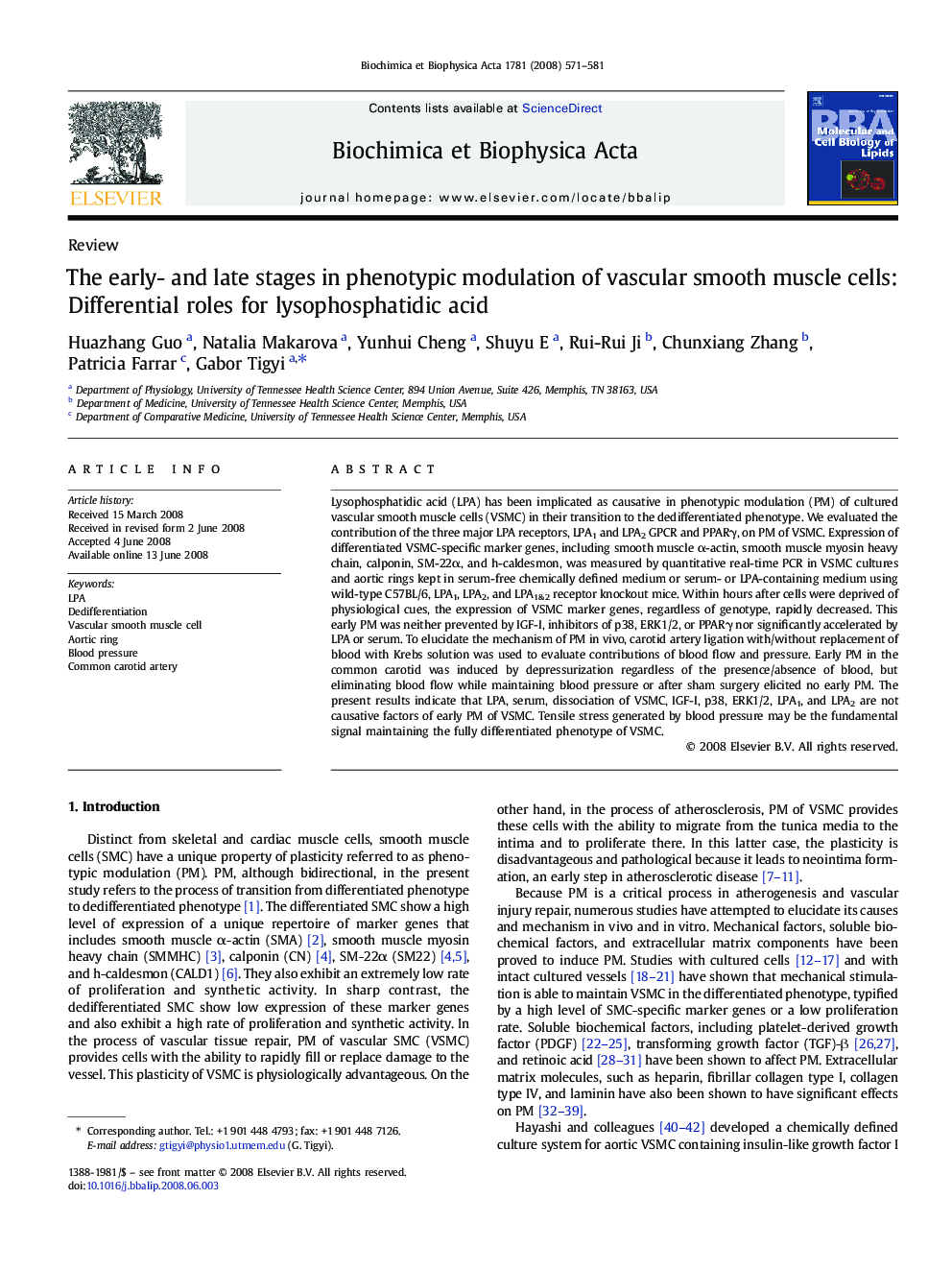| Article ID | Journal | Published Year | Pages | File Type |
|---|---|---|---|---|
| 1949981 | Biochimica et Biophysica Acta (BBA) - Molecular and Cell Biology of Lipids | 2008 | 11 Pages |
Lysophosphatidic acid (LPA) has been implicated as causative in phenotypic modulation (PM) of cultured vascular smooth muscle cells (VSMC) in their transition to the dedifferentiated phenotype. We evaluated the contribution of the three major LPA receptors, LPA1 and LPA2 GPCR and PPARγ, on PM of VSMC. Expression of differentiated VSMC-specific marker genes, including smooth muscle α-actin, smooth muscle myosin heavy chain, calponin, SM-22α, and h-caldesmon, was measured by quantitative real-time PCR in VSMC cultures and aortic rings kept in serum-free chemically defined medium or serum- or LPA-containing medium using wild-type C57BL/6, LPA1, LPA2, and LPA1&2 receptor knockout mice. Within hours after cells were deprived of physiological cues, the expression of VSMC marker genes, regardless of genotype, rapidly decreased. This early PM was neither prevented by IGF-I, inhibitors of p38, ERK1/2, or PPARγ nor significantly accelerated by LPA or serum. To elucidate the mechanism of PM in vivo, carotid artery ligation with/without replacement of blood with Krebs solution was used to evaluate contributions of blood flow and pressure. Early PM in the common carotid was induced by depressurization regardless of the presence/absence of blood, but eliminating blood flow while maintaining blood pressure or after sham surgery elicited no early PM. The present results indicate that LPA, serum, dissociation of VSMC, IGF-I, p38, ERK1/2, LPA1, and LPA2 are not causative factors of early PM of VSMC. Tensile stress generated by blood pressure may be the fundamental signal maintaining the fully differentiated phenotype of VSMC.
